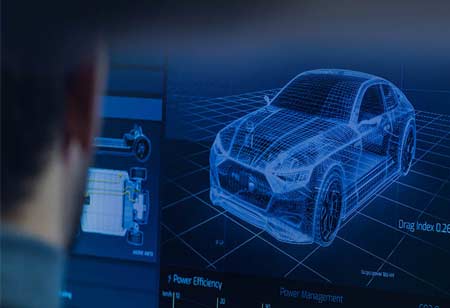THANK YOU FOR SUBSCRIBING
THANK YOU FOR SUBSCRIBING
Be first to read the latest tech news, Industry Leader's Insights, and CIO interviews of medium and large enterprises exclusively from Auto Tech Outlook

By
Auto Tech Outlook | Monday, January 29, 2024
Stay ahead of the industry with exclusive feature stories on the top companies, expert insights and the latest news delivered straight to your inbox. Subscribe today.
The Asia-Pacific automotive market is expanding due to technological advancements, with in-car infotainment systems, smartphone integration, touchscreens, high-resolution displays, and cloud-based gaming platforms attracting middle-class and technologically advanced populations.
FREMONT, CA: Growing middle classes and technologically adept populations are driving the automotive market's evolution in Asia-Pacific (APAC). Within this context, in-car infotainment systems (IVI) are playing a transformative role in shaping the driving experience and exerting a discernible impact on consumer preferences. What was once considered as optional add-ons has now become an integral aspect of the automotive landscape.
Connectivity Reigns Supreme
Seamless integration with smartphones, exemplified by the compatibility with Apple CarPlay and Android Auto, has evolved into an essential feature. Users now expect easy access to their preferred music apps, navigation tools, and messaging services without the complications of multiple interfaces.
Continual connectivity has become a focal point, with the adoption of integrated eSIMs and Wi-Fi hotspots gaining momentum. This facilitates real-time updates on traffic conditions, weather forecasts, and access to streaming services while on the move.
The ascent of hands-free voice assistants is noteworthy, offering both convenience and safety for users. This growing trend allows individuals to control various functions through voice commands, including music playback, navigation, and climate settings. Moreover, incorporating regional language support underscores the increasing importance of catering to diverse linguistic landscapes in ensuring a user-friendly experience.
User Interface Matters
In automotive infotainment systems, intuitive design remains paramount, with touchscreen interfaces taking center stage. The emphasis lies not only on the prevalence of these interfaces but also on ensuring clarity and responsiveness. Consumers prioritize user-friendly menus, streamlined learning curves, and interfaces that minimize distractions, particularly when driving.
A pivotal aspect of modern infotainment preferences is customization. Users actively seek the ability to tailor their experience, encompassing customizable dashboards, distinct profiles for various drivers, and adjustable settings such as display brightness and font size.
Prioritizing safety is non-negotiable in this context. Infotainment systems now integrate voice control and minimalist interfaces to mitigate visual distractions, addressing the imperative of ensuring driver concentration. Some advanced systems go a step further by incorporating driver-monitoring systems, detecting signs of fatigue or drowsiness to enhance overall safety on the road.
Entertainment Expands Horizons
In in-car entertainment, traditional radio is yielding ground to the growing popularity of streaming services such as Spotify and YouTube Music. These platforms provide users with extensive access to a diverse array of music and podcasts, reflecting a shift in consumer preferences. Simultaneously, regional content providers are emerging to cater to local tastes and languages, adding a personalized touch to the in-car entertainment experience.
The evolution of in-car entertainment extends beyond audio, as cars equipped with high-resolution displays and surround-sound systems are transforming into miniature cinemas. This trend is particularly valued by passengers, especially families with children, seeking entertainment options to enhance their experience during extended journeys.
Furthermore, the integration of cloud-based gaming platforms into vehicles is introducing a new dimension to in-car entertainment, especially appealing to younger demographics. However, the implementation of such gaming features raises safety concerns, necessitating careful consideration of potential driver distraction.
Fueled by a surging demand for connected automobiles, escalating disposable incomes, and technological advancements, the APAC infotainment market is poised for substantial growth. To maintain a competitive edge, it is imperative for automakers and technology companies to remain attuned to evolving consumer preferences within their respective markets. Prioritizing safety measures, mitigating driver distractions, and delivering a seamless connection, along with the provision of user-friendly interfaces, personalized experiences, and a diverse array of entertainment options, should be paramount considerations. The trajectory of infotainment in the region is forecasted to embody a landscape characterized by innovation, enjoyment, and an authentically connected driving experience, achieved through a nuanced understanding and accommodation of these evolving preferences.
 Copyright © 2025 AutoTech Outlook. All Rights Reserved | Privacy Policy | Subscribe | Sitemap | About us | Feedback Policy | Editorial Policy
Copyright © 2025 AutoTech Outlook. All Rights Reserved | Privacy Policy | Subscribe | Sitemap | About us | Feedback Policy | Editorial Policy 



